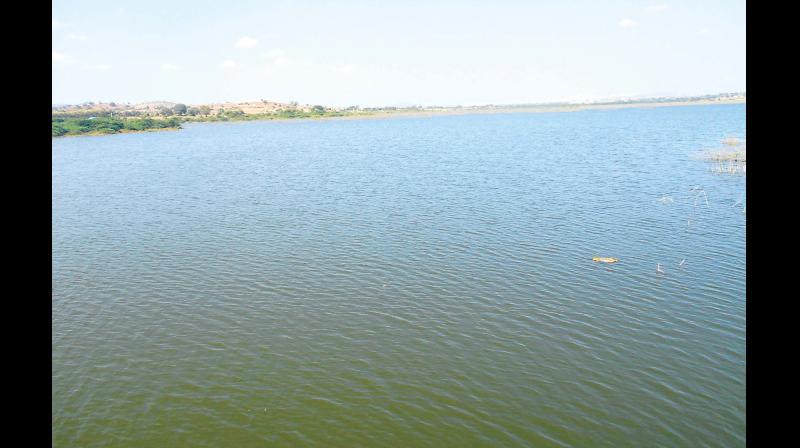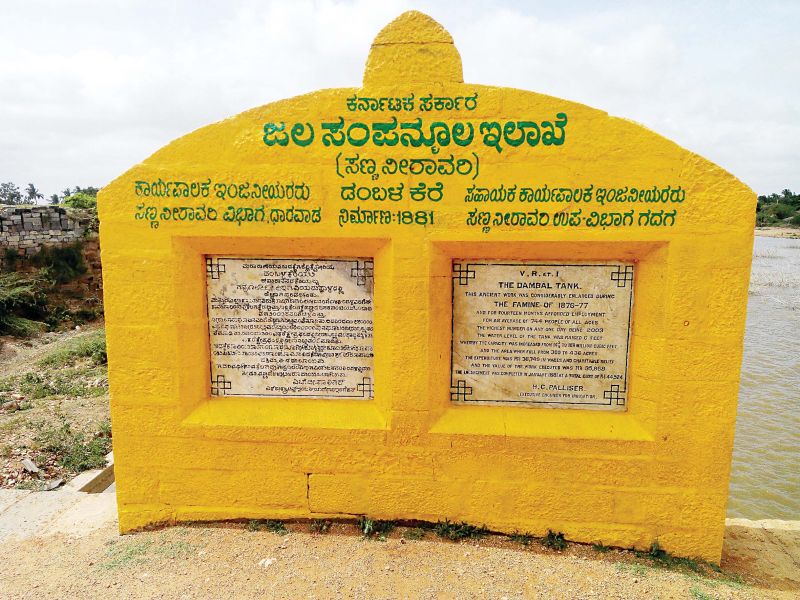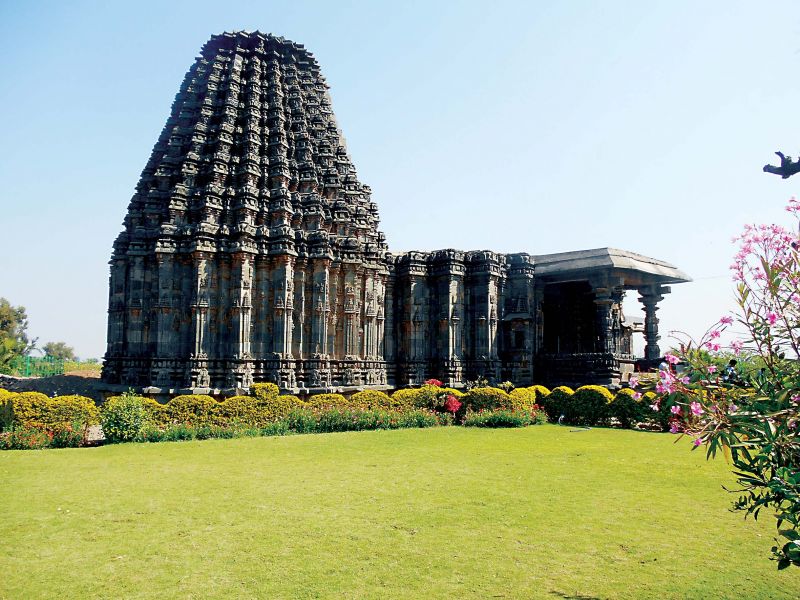Sunday story: Victoria brimming with history and water!

History lives in our ancient shrines, palaces and forts, in the glorious ruins of many a monument, which has fallen to the vagaries of time. But who would have thought that history also lives in our lakes? It does. The people in the little village of Dambal in Gadag district would swear by this fact and not hesitate to pledge their unflinching loyalty to Queen Victoria! All because the former Empress of Imperial India built a huge lake for them, which continues to feed their fields and homes amidst the recurring droughts plaguing the Hyderabad-Karnataka region. Vittal Shastri explores the history of this amazing water body.
One hundred and forty years have passed since the colonial rulers descended on Dambal during the Great Famine in 1876-78 when more than 55 lakh people starved to death in the country. But the villagers recall it like it happened yesterday when the project was taken up with labourers employed on the lines of the present rural employment guarantee scheme and paid minimum wages.
The historic Victoria Lake was thus built by 744 people of all ages and was meant to store 108 million cubic feet of water for irrigation and drinking water. The villagers claim that even pregnant women toiled to build the lake and the babies in their wombs too got wages. British officials paid double wages to these women considering that the baby also engaged in the novel work to combat the drought!
The project was completed in January 1881 at a total cost of Rs 44,524-no less than amazing considering the thousands of crores splurged by our present rulers on irrigation projects.
The British no doubt plundered our virgin treasures, they carried away our ancient wealth and wrecked our native economy, they even tortured our freedom fighters but they also envisaged and built projects which would make any Indian go green with envy.
Dambal has a 15,000-strong population and most of them are dependent on agriculture for their livelihood. A decade ago, rain was abundant in the village which was evident in the rich flora and fauna in Kappattagudda forest. But, then the monsoon failed and the villagers had to migrate to cities in search of jobs. Even Victoria Lake, deprived of water, soon turned into a playground.
Those were bad times but the lake is brimming with water since last year thanks to the completion of the Singatalur lift irrigation project. The picturesque lake, surrounded by the rich vegetation of Kappattagudda, is slowly regaining its lost glory, thanks to the water supply from Singatalur.
It may seem amazing but Queen Victoria’s name is on everyone's lips in the village where she is revered for helping them attain prosperity. Spread over 500 acres, the lake now irrigates more than 3,000 acres. Several ponds and borewells have suddenly sprung back to life and are filled with water after recharge of the underground water table. The brimming water bodies have even attracted migratory birds and the smile is back on the sun beaten faces of farmers.
The villagers treasure the lake so much that every household offers Bagina and performs other rituals at the 140-year-old stone inscriptions bearing the name of Queen Victoria on the lake bund as thanksgiving to the British.
The success story of Victoria Lake has now prompted drought-prone farmers in Gadag district to demand supply of river water to their lakes. The voices for such a novel scheme is growing shriller in the region in the backdrop of a considerable reduction in the storage capacity of Tungabhadra reservoir due to accumulation of a huge amount of silt over the years.
 Jappadbavi, which was discovered recently
Jappadbavi, which was discovered recently
Now, that the water is back, the villagers are returning to resume their ancestral occupation using the river water flowing into the lake. “We used to grow paddy, coconut, bananas, sugarcane and other water intensive commercial crops as the soil is rich in minerals like iron, copper and zinc. But encroachments in the forest and rampant mining affected the ecosystem. The river water has helped us revive the lake and our fortunes,” said jubilant sixty-eight-year-old farmer Gurushantayya Hiremath. Victoria Lake is not the only attraction in Dambal, there is also the Doddabasappa temple built in Chalukya architecture style in the 12th century.
 140-year-old stone inscriptions bearing the name of Queen Victoria on the lake bund
140-year-old stone inscriptions bearing the name of Queen Victoria on the lake bund
It was an ancient centre of Buddhism with relics are found at several places in the village. An inscription dating back to 1095 is found in Tara Mandir, a temple of the Buddhist deity. Recently, a beautiful well Jappadbavi, where Jain monks used to do meditation was discovered in the village.
 Doddabasappa temple near the lake
Doddabasappa temple near the lake
British authorities also built an emergency shed in front of the lake where they used to stay while monitoring the construction of Victoria Lake. The archeological department renovated the shed without altering its original form and structure a few years ago.
“The lake had dried up for more than a decade due to the failure of the monsoon. Therefore, I had leased out my four-acre farm land and used to visit Goa and Mangaluru to work as a daily wager in the construction industry. Now, I have resumed agriculture after many years as it is brimming with water. This helped me get a good crop,” said farmer Rudrappa Bugari.
There could be thousands of relics of the British era or maybe those created by our ancient rulers, who with their simple, unblemished wisdom, left us with treasures which are hardly appreciated now. Victoria Lake is one; they are sure to be many others, maybe hidden from our eyes because they are so familiar to us and yet have secrets which we have not ventured to discover. It’s time to take a fresh look before they vanish into the abyss of time.
There is a song which villagers of Dambal sing, which helps unfold the mystery behind Victoria Lake. Historians feel that it was just a small pond
before the 6th century and a woman had sacrificed herself in it. Later, this pond was enlarged into a vast lake during the Great Famine in 1876.
The song says that the head of the village, Doddabasappa refused to distribute all foodgrains supplied by King Pulakeshi-I, the founder of the Chalukya dynasty, among the drought-hit villagers. He kept it all for himself while the villagers died of starvation. This left his wife Mallamma who was concerned over the plight of the farmers, grief-stricken. She committed suicide, fed up with the selfish behavior of her husband but made her son promise to construct a pond for the drought-prone villagers by giving him a diamond ring, donated by her parents at the time of marriage. “The lake has 14 centuries of history. The pond was earlier desilted in 1824, 1860 and 1869 before it was enlarged during the British era.
Originally, the lake was spread over more than three thousand acres and lost a large area due to encroachments and accumulation of silt,” explained ancient historian and epigraphic expert Dr Hanumakshi Gogi, who has conducted research on Victoria Lake.

